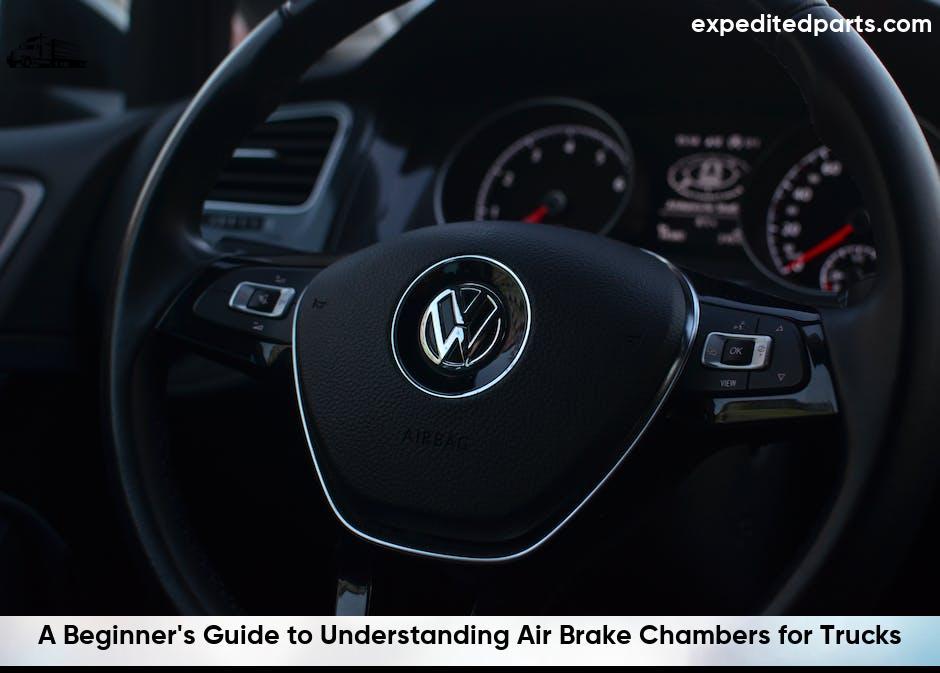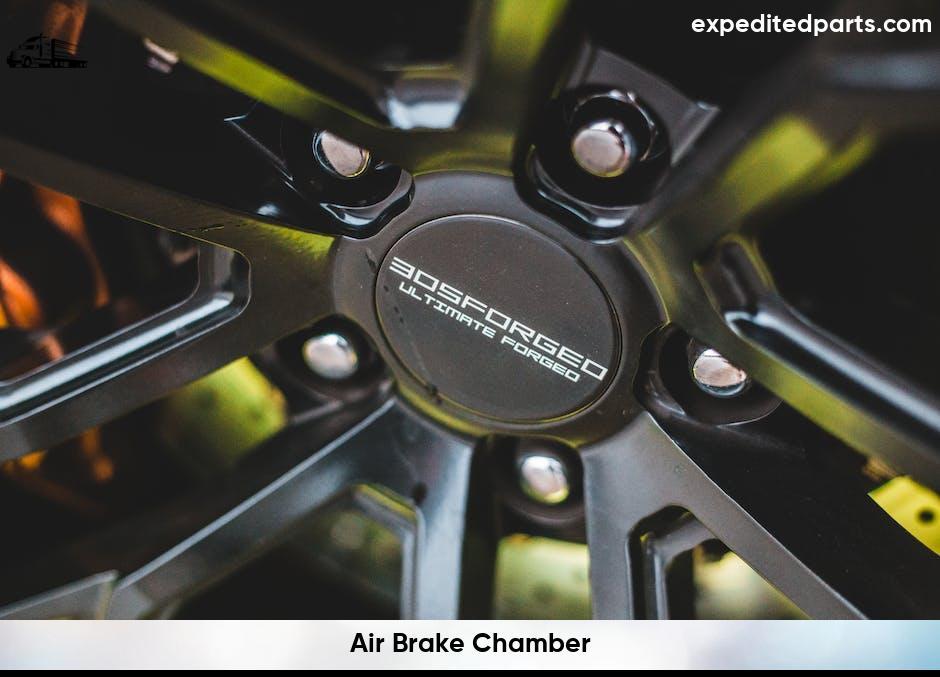An air brake chamber is a critical component of an air brake system used in heavy-duty vehicles such as trucks and buses. It is responsible for converting air pressure into mechanical force, enabling the vehicle to slow down or come to a complete stop. The air brake chamber consists of a diaphragm and a push rod, which work together to engage the brake shoes or brake pads against the wheel drums or discs. By controlling the release and application of air pressure, the air brake chamber ensures smooth and reliable braking performance. Without a properly functioning air brake chamber, the safety and efficiency of the vehicle would be compromised.
 A Beginner’s Guide to Understanding Air Brake Chambers for Trucks
A Beginner’s Guide to Understanding Air Brake Chambers for Trucks
A Beginner’s Guide to Understanding Air Brake Chambers for Trucks
Are you new to the world of trucking and wondering how the air brake system works? One important component of the air brake system is the air brake chamber. In this guide, we will help you understand what an air brake chamber is and its significance in maintaining proper braking performance in trucks.
An air brake chamber is a crucial part of the air brake system in trucks. Its main purpose is to convert compressed air into mechanical force, ultimately enabling the braking system to stop the vehicle. Inside the chamber, there are two diaphragms separated by a push rod. When air pressure is applied, the diaphragms move, and the push rod transmits the force to the foundation brake.
Understanding the different types of air brake chambers is essential. The two most common types are the service brake chamber and the spring brake chamber. The service brake chamber controls the brakes during normal operation, while the spring brake chamber provides parking and emergency braking functionality.
To help you differentiate between the various types of air brake chambers, here is a comparison table:
| Chamber Type | Function |
|---|---|
| Service Brake Chamber | Controls brakes during normal operation |
| Spring Brake Chamber | Provides parking and emergency braking |
Now that you have a basic understanding of air brake chambers, it’s important to know their maintenance requirements. Regular inspection and maintenance of air brake chambers can help prevent brake failure and ensure safe truck operation.
- Inspect the air brake chambers for any signs of leaks, cracks, or damage regularly. Replace any damaged or faulty chambers immediately.
- Keep the air brake chambers clean and free from debris or contaminants.
- Regularly check the air brake chamber for proper air pressure and functioning.
The Importance of Properly Maintaining Air Brake Chambers
The Importance of Properly Maintaining Air Brake Chambers
Maintaining the air brake system of a truck is crucial for not only the safety of the driver but also for the safety of others on the road. One specific component that requires proper maintenance is the air brake chamber. In this guide, we will highlight the importance of maintaining air brake chambers and the potential consequences of neglecting their upkeep.
Air brake chambers play a vital role in the overall functioning of the air brake system. These chambers convert compressed air into mechanical force, which is essential for the effective operation of the braking system. Neglecting the maintenance of air brake chambers can lead to various issues, including decreased braking performance and compromised safety.
Here are some key reasons why properly maintaining air brake chambers is important:
- Ensuring proper braking performance: Regular maintenance of air brake chambers helps to maintain optimal braking performance in trucks. Malfunctioning or damaged chambers can result in delayed response times, reduced braking power, and increased stopping distances, posing a serious risk on the road.
- Preventing brake failures: Neglected air brake chambers are more likely to fail, which can result in a complete loss of brakes. This can lead to accidents, injuries, and even fatalities. Proper maintenance, including inspections and repairs, significantly reduces the risk of brake failures.
- Increasing overall vehicle safety: Maintaining air brake chambers is a crucial aspect of ensuring the overall safety of a truck. By regularly inspecting and servicing the chambers, potential issues can be identified early on and addressed, preventing more significant problems from arising.
- Compliance with regulations: Trucking regulations often require regular maintenance and inspections of the air brake system, including the chambers. By properly maintaining these components, truck owners and operators can ensure compliance with safety regulations and avoid penalties.
Proper maintenance practices for air brake chambers include regular inspections, cleaning, lubrication, and timely replacement of damaged or faulty chambers. It is important to consult the manufacturer’s guidelines and seek professional assistance for any maintenance or repair needs.
In conclusion, proper maintenance of air brake chambers is essential for the safe and reliable operation of trucks. By prioritizing the upkeep of these crucial components, truck owners and operators can ensure optimal braking performance, prevent failures, and promote overall road safety.
When it comes to air brake systems in vehicles, one crucial component is the air brake chamber. The air brake chamber is responsible for converting air pressure into mechanical force, enabling the brakes to engage and stop the vehicle efficiently and effectively. However, there are different types of air brake chambers available in the market, each with its own unique characteristics and advantages.
Here is a list of the different types of air brake chambers:
- Single Diaphragm Spring Brake Chamber – This type of air brake chamber has a single diaphragm that uses air pressure to engage the brakes. It is commonly used in light- to medium-duty vehicles.
- Double Diaphragm Spring Brake Chamber – Similar to the single diaphragm chamber, the double diaphragm chamber also uses air pressure to engage the brakes. However, it has two diaphragms for added strength and reliability, making it suitable for heavy-duty vehicles.
- Piston Brake Chamber – The piston brake chamber operates differently than diaphragm chambers. It uses a piston and cylinder design to engage the brakes, providing a high level of braking force. This type of chamber is often found in heavy-duty and commercial vehicles.
In addition to these main types, there are also variations and combinations of air brake chambers available. It’s important to consult the vehicle’s manufacturer or a professional mechanic to determine the appropriate type of air brake chamber for your specific vehicle.
How to Troubleshoot Common Issues with Air Brake Chambers
While air brake chambers are integral components of a vehicle’s braking system, they can occasionally encounter issues that may affect their performance. Understanding how to troubleshoot common problems with air brake chambers can help ensure the safety and efficiency of the vehicle’s braking system.
Here are some common issues that may arise with air brake chambers and their possible troubleshooting steps:
2. Lubricate the necessary parts to reduce friction.
3. Inspect the air brake chamber for any internal obstructions or debris and clean if required.
4. Adjust the brake shoe clearance to the manufacturer’s specifications.
| Issue | Troubleshooting Steps |
|---|---|
| Air Leaks | 1. Check for loose fittings or connections and tighten them as necessary.
2. Inspect the air brake chamber for any signs of damage or wear and replace if needed. 3. Ensure that the diaphragm or piston is properly sealed and intact. |
| Brake Dragging | |
| Brake Failure | 1. Check the air pressure in the system and ensure it meets the recommended range.
2. Inspect the air brake chamber for any signs of damage or malfunction and replace if necessary. 4. Confirm that all brake system components are properly connected and functioning. |
It is important to note that troubleshooting air brake chambers should only be done by trained professionals or individuals with a thorough understanding of the braking system. If you are unsure or uncomfortable with performing these steps, it is best to seek assistance from a qualified mechanic.
Everything You Need to Know About Air Brake Chamber Installation
When it comes to installing air brake chambers, it’s important to understand the process and ensure proper installation for optimal performance and safety. Here is everything you need to know about air brake chamber installation:
- Start by selecting the correct size and type of air brake chamber for your specific vehicle and brake system. Refer to the manufacturer’s recommendations or consult with a professional for guidance.
- Ensure that all necessary tools and equipment are readily available before starting the installation process. This may include wrenches, pliers, air hose fittings, and a torque wrench.
- Prior to installation, inspect the air brake chamber for any signs of damage or wear. Replace any damaged or worn components to ensure proper functioning.
- Locate the mounting bracket on the vehicle where the air brake chamber will be installed. Clean the mounting surface and ensure it is free from any debris or obstructions.
- Position the air brake chamber onto the mounting bracket, lining up the bolt holes. Insert the bolts and tighten them securely using a torque wrench to the manufacturer’s specified torque settings.
- Connect the air brake chamber to the brake system using the appropriate fittings and hoses. Ensure that all connections are tight and secure to prevent air leaks.
- Once the installation is complete, perform a thorough check of the entire system to ensure proper function. This may include checking for air leaks, testing the brakes, and ensuring the air brake chamber operates smoothly.
- Regular maintenance and inspections are essential to keep the air brake chamber in good working condition. Follow the manufacturer’s recommended maintenance schedule and inspect for any signs of wear or damage regularly.
By following these guidelines and ensuring proper installation and maintenance, you can ensure the optimal performance and safety of your air brake chamber.
The Role of Air Brake Chambers in Ensuring Road Safety
Air brake chambers play a crucial role in ensuring road safety by enabling effective braking in heavy vehicles. Here is an overview of the important role air brake chambers play:
- Braking Power: Air brake chambers convert air pressure generated by the braking system into mechanical force, which is essential for stopping heavy vehicles. They provide the necessary power to halt the vehicle efficiently and safely.
- Brake Balance: Air brake chambers contribute to maintaining proper brake balance between the wheels of a vehicle. They ensure that braking force is evenly distributed, preventing skidding or loss of control during braking maneuvers.
- Emergency Braking: In emergency situations, air brake chambers allow for rapid and effective braking. They can provide the necessary force to bring a vehicle to a quick stop and prevent accidents.
- Regulation and Control: Air brake chambers help regulate the braking process by controlling the release and application of air pressure. This allows for smooth and controlled braking, enhancing safety on the road.
- Redundancy and Safety Measures: Heavy vehicles typically have multiple air brake chambers installed, providing redundancy in case of a failure. This redundancy ensures that there is still braking capability even if one chamber malfunctions.
Overall, air brake chambers are vital components in ensuring road safety. Proper maintenance, regular inspections, and adherence to recommended installation procedures are essential to ensure their reliable and safe operation.


